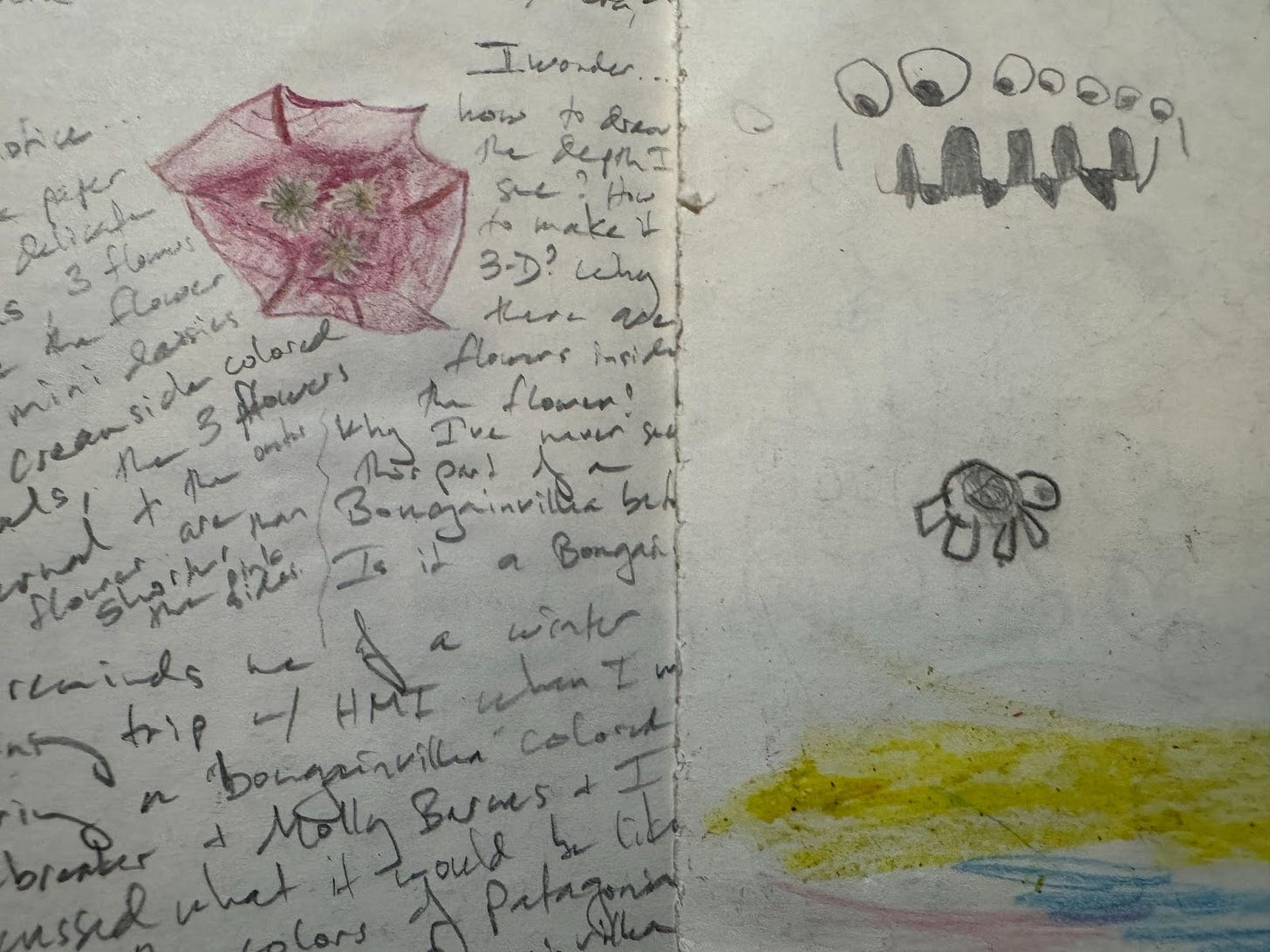Listen if you prefer:
There’s a monster in my nature journal.
That’s what my life is like. Maybe yours too. In the places and spaces I’ve allocated for meditation and reflection, a many-eyed monster just pops out.
Fragmented as life tends to be these days, I’m interrupting my planned musings about maternal instinct (which, by the way, just got autocorrected to be “material instinct” – a VERY disturbing algorithmic assumption) to talk about the nature of education and nature IN education.
I’m a bit of a connoisseur of education podcasts (happy to provide my list, and while I adjust my glasses on my nose, I’ll mention that my fave is the deeply nerdy Have You Heard Podcast featuring education journalist
and ed historian Jack Schneider).When I choose one of these ed pods, it’s because I want to explore the topic at hand – from school choice and voucher programs to the role of generative AI in creating highly customized lesson plans.
I listen to other stuff too, though. To what my friend
calls “chit-chat” podcasts. To newsy podcasts. To pods about nature. And other random stuff. This American Life. Serial. Etcetera.I’ve long lamented how nature and education rarely hang out together in mainstream circles. Save for glancing Venn overlap, mainstream education podcasts are about education and nature podcasts are about nature (there are exceptions, of course, but few).
Sometimes, however, education or nature goes out to hob nob with the big dogs. Last week, education reared its many-eyed head right in the middle the The
Show. Woah. The episode, We have to really rethink the purpose of education featured Rebecca Winthrop, the director of the Center for Universal Education at the Brookings Institution.As I listened (at 1.5 playback speed, obviously), I was en route to my fave professional – but personal too (which is why I like it) – convening, the Children & Nature Network’s “Nature Everywhere” conference – where ALL kinds of people from different sectors hang out because we’re unified in our desire to connect/reconnect children (and adults too) with more-than-human nature. It’s like a daisy Venn gathering, with a giant center of shared purpose surrounded by glorious specialized petals that overlap and radiate outwards into beautiful awesomeness.

I’m not going to give you a play-by-play of the episode because that would be boring and ChatGPT can do that better plus you should just listen if you’re interested. Suffice it to say, a main theme was about the purpose of education in the age of AI.
As I listened to Dr. Winthrop, especially as she recounted the bananas dystopian idea where people (not her!) designed an app to facilitate parents checking in with their kids, I felt a wave of actual rage (and I’m not a very rage-y person) at how we’re missing the forest AND the trees.
A proverb (Chinese? African? Not sure) jumped to mind:
"The best time to plant a tree was 20 years ago. The second-best time is now.”
If ever there were a time for nature and education to show up together, NOW is that time. Yes, 20 years ago, but definitely now.
Now is the time to shout the conclusion from my fave integrative review (what’s yours? ;) - Do Experiences with Nature Promote Learning? Converging Evidence for a Cause and Effect Relationship, loud, from the treetops:
“We conclude it is time to take nature seriously as a resource for learning and development. It is time to bring nature and nature-based pedagogy into formal education – to expand existing, isolated efforts into increasingly mainstream practices.”
Why? Human-nature connections are good for students, good for educators, and good for our planet, too. We know this. What’s more, connecting with nature supports connections with other humans and to our own humanness and to collective humanity (and planety, as I like to say), too. Whatever your position on the role of AI in education, I would argue nature always belongs.
If I must (and I don’t love doing this but I will because we’re in Rome), we could say that nature connections are exactly the “technology” we need while we rethink the purpose of education. And also, when we figure out what that is. It was-is-always-will-be time to mainstream nature connections in education. 20 years ago. Now. And 20 years hence.
❤️,
B



